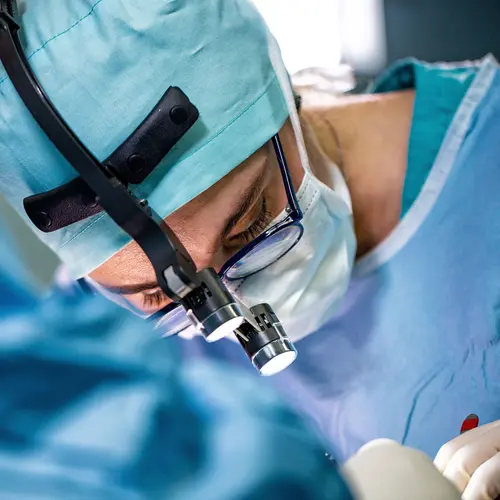An aortobifemoral bypass is a surgery that's done to redirect your blood flow around a large, blocked artery in your groin or abdomen. It increases the blood flow to your legs. It's a major surgery that is usually only done if you're in danger of losing a leg or if your symptoms are severe.
How Is an Aortofemoral Bypass Done?
Your surgeon will use an artificial blood vessel to bypass the clogged artery. It is shaped like an upside-down Y. The bottom of the Y will be sewn to your aorta above the diseased part of the artery in your abdomen. The two top parts of the Y will be attached to the femoral arteries below the blocked area.
The femoral arteries are the large arteries in each of your thighs. After this graft is put in, the blood will be able to flow from your aorta to your femoral arteries by going around the clogged area.
Why Would You Need an Aortobifemoral Bypass?
You may need an aortobifemoral bypass if one of the major arteries in your abdomen, pelvis, or groin is blocked by a buildup of fatty deposits on your artery walls. The aorta is the largest artery in your body. It's in your abdomen. It splits to form the iliac arteries in your pelvis. These arteries are called the femoral arteries when they reach your thighs.
A buildup of fatty deposits in your artery is called atherosclerosis. It's called peripheral artery disease (PAD) when atherosclerosis affects the arteries leading to your arms, legs, stomach, or head. It usually affects the arteries leading to your legs.
The tissues in your legs can't get enough oxygen if the blood flow is blocked by peripheral artery disease. When this happens, it might cause:
- Pain that gets worse if you exercise
- Sores that won't heal on your legs or feet
- Nerve damage
- Gangrene, which is when your tissues die because they don't get enough blood
- Dry, itchy, scaly, or brown skin on your legs or feet
- The need for amputation of your leg
What Are the Risks and Possible Complications of an Aortobifemoral Bypass?
The most serious risk of an aortobifemoral bypass is a heart attack. Other complications that can develop are:
- Bleeding
- Infection
- Hematoma, which is a collection of blood outside of a blood vessel
- Kidney problems
- Breathing problems
- Hernia
- Blood clot in your leg
- Swelling in the wall of the artery caused by a small hole
- Aortoenteric fistula, which is an abnormal connection between the aorta and the gastrointestinal system
What Are the Results of an Aortobifemoral Bypass?
About 80% of people who have aortobifemoral bypass surgery have relief of symptoms and successful bypass of the blocked artery after surgery. Most people don't have pain when they are resting. Their pain is greatly reduced when they are walking, as well. If you smoke, your outlook will be better if you quit smoking before the surgery and don't start back.
Who Should Not Have an Aortobifemoral Bypass?
Before you have an aortobifemoral bypass, you should try other ways to treat your peripheral artery disease, including:
- Quitting smoking
- Exercising regularly
- Taking medicine to thin your blood
- Losing weight
- Treating your high cholesterol
- Treating your diabetes
- Treating your high blood pressure
Anyone who can't have general anesthesia shouldn't have an aortobifemoral bypass. You may also be at an increased risk of complications if you have any of the following issues:
- Significant heart disease
- A recent stroke
- A recent heart attack
- Multiple previous surgeries in your abdominal area
- Retroperitoneal fibrosis, which is a rare disease that causes fibroids in your abdominal cavity
- End-stage kidney disease
- A horseshoe kidney, which is when you were born with your kidneys fused together
What Can You Expect After Surgery?
You will be sore and tired for several weeks after your surgery. You'll be able to do many of your normal activities after 4 to 6 weeks. It may take you up to 2 to 3 months to fully recover. The following tips will help you take care of yourself at home:
- Get plenty of sleep.
- Rest when you feel tired.
- Try to walk a little more each day.
- Avoid strenuous activities until your doctor says it's okay.
- Avoid straining to lift anything for 6 weeks.
- Follow your doctor's instructions about breathing exercises, showering, and activity.
Call your doctor if you have any of the following symptoms after surgery:
- Fever, chills, or other signs of infection
- Nausea or vomiting
- Cough, shortness of breath, or chest pain
- Redness, swelling, pain, bleeding, or discharge from your incision site
- Pain that can't be controlled with your medicine
- Pain or swelling in your legs or feet
- Problems when you urinate, including pain, urgency, frequency, or bleeding
- Legs that are pale, blue, cold, tingly, or numb

